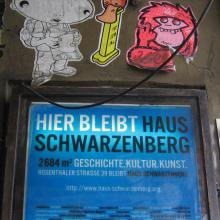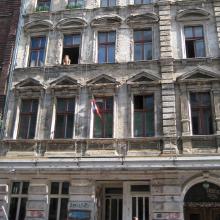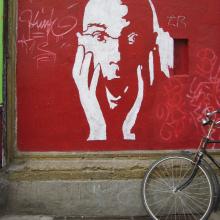Cultural Centers
Cultural and art centers have an important public dimension. While their motivation is to create affordable studio and exhibition spaces for artists and performers, they include venues open to the public such as cafés, bars, movie theaters, performance spaces, galleries, and museums. They offer cultural activities outside of mainstream commercial or institutional frameworks. This gallery includes three examples: The Haus Schwarzenberg; the Schokoladen; and the KuLe (Kunst und Leben). All three incorporate ruination and decay prominently in their exterior and interior spaces. They mingle the weathered state of their buildings with new additions: sculptures, graffiti, posters, and installations.
In some ways, these cultural centers encapsulate the social and spatial history of Berlin from division to unification. Their respective buildings had languished in slow decay during the years of German division, in former East Berlin. In the first few years after unification, these buildings, like so many others, were occupied by a lively alternative scene, responsible for much of Berlin’s cultural and social effervescence in that period. This cultural life added to the cachet of central Berlin, creating an inadvertent synergy with the efforts of private investors who redeveloped the area into a trendy neighborhood. The gentrification of central Berlin ended up pushing away this alternative scene, threatening the existence of these cultural centers. Their contested state illustrates the conflicts of the recent transformation of Berlin, and more broadly the fraught and unfinished character of German unification itself.


